
On our second day in Prague, we decided to explore the east bank of the Vltava River on foot. The Vltava is the longest river in the Czech Republic and it goes right through the capital. Apparently eighteen bridges cross it within the city limits, although we only saw five or six.
From the Old Town (Staré Mêsto), first we went north – past the large monument depicting Jan Hus (Christian theologian, philosopher and martyr), and many Gothic-style buildings – to the section of town called Josefov. Josefov was the Jewish ghetto for several centuries, and there we visited the The Old New Synagogue, also called the Altneuschul. “Europe’s oldest active synagogue, [the Altneuschul] is also the oldest surviving medieval synagogue of twin-nave design. Completed in 1270 […], it was one of Prague’s first Gothic buildings” (Wikipedia). There are two other synagogues nearby, and many buildings with Hebrew lettering and Jewish symbols.
The Jewish population of Czechoslovakia was nearly annihilated during World War II; approximately 78,000 Czech Jews died at the hands of the Nazis. Among those murdered were several relatives of our late friend Miro Klement, whom I mentioned in my previous post. Miro’s first cousins Ivo and Tomáš, who were only ten and eleven respectively, were among those who died at Auschwitz in 1944, as were two of Miro’s aunts, an uncle and several other relatives. At the urging of their families, Miro and his parents had fled Czechoslovakia in 1939 and, after stays in France and Italy, ended up in England for the duration of the War. Miro recalled how at one point prior to their move, they’d had to change apartments because someone had put a sign on their door that read “Jews live here.”
Visiting the streets where Miro grew up and seeing Prague’s Jewish ghetto brought home to me the horrifying reality of the Holocaust in a way that nothing had before. I tried to imagine what it must have been like for him to learn that immediate relatives including two first cousins, his playmates since the three of them had been born within two years of one another, had been gassed in a concentration camp. It would have been even more difficult for me to comprehend if anti-semitism and hate speech were not, yet again, on the rise.


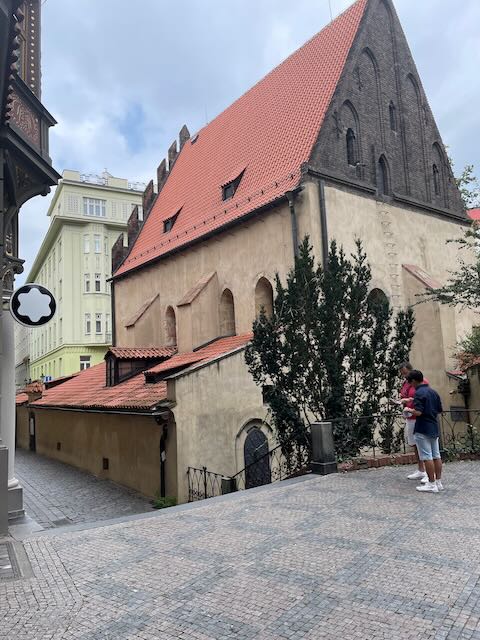


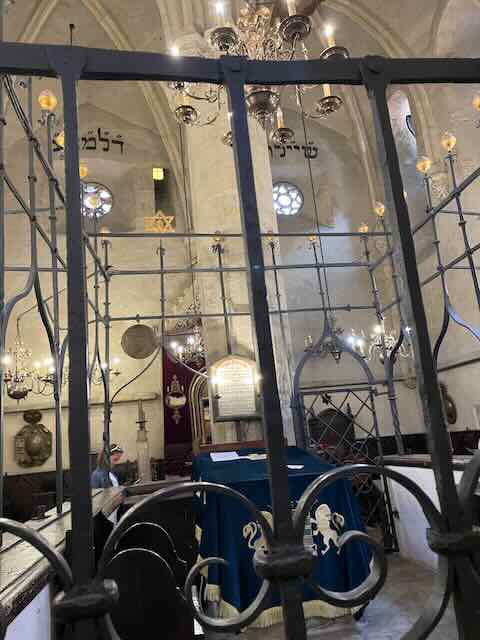
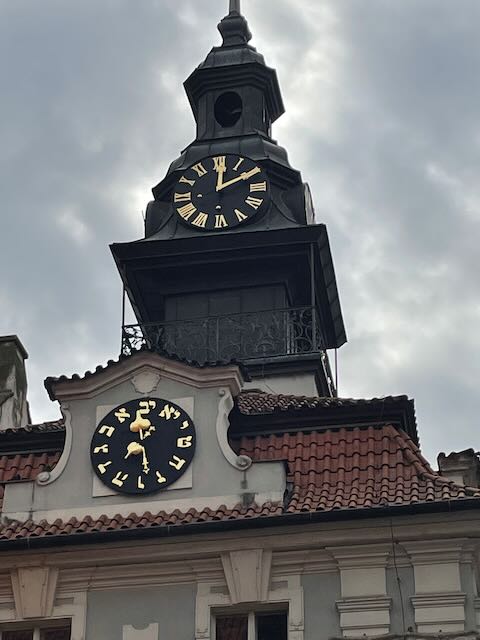

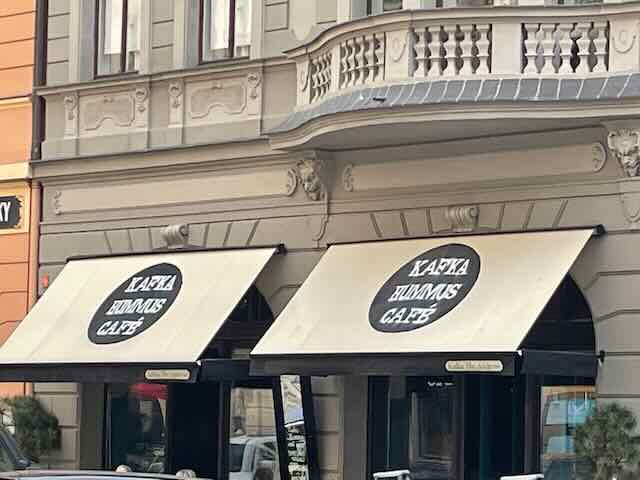
Prague boasts outstanding examples of Gothic, Renaissance and Baroque buildings and as we headed south, we passed one astounding piece of architecture after another. From an early age, Miro had been fascinated with how buildings were designed and constructed; he later worked and taught in the field of architecture. As a teenager, after his family had returned to Prague following the War, he would take a streetcar around the city on Saturdays when his mother and stepfather were at work, admiring the buildings and visiting the castle, churches and cultural exhibitions.


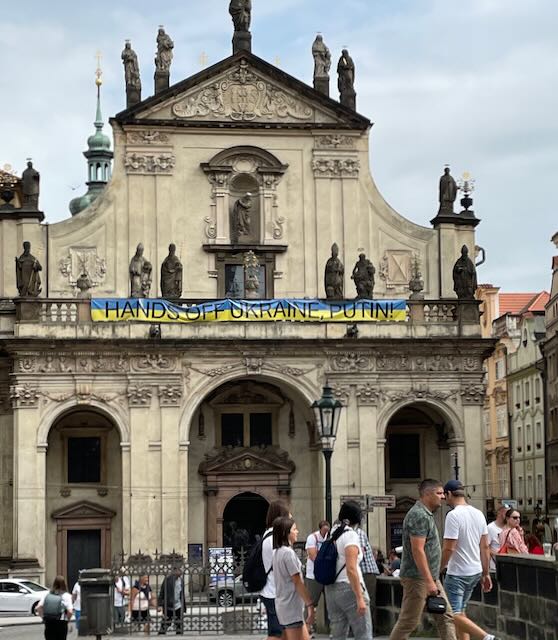

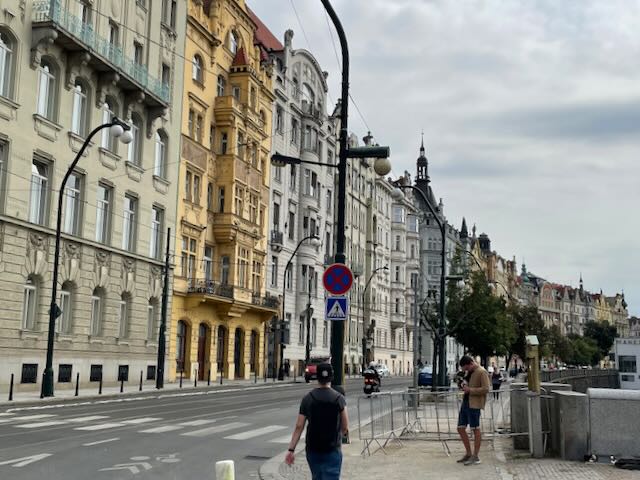
The Dancing House
As well as appreciating classical structures, Miro was always open to architectural innovation – provided he found it to be of merit. (He had high standards). He was fond of the Dancing House (“Tančící dům“) on the Rašínovo embankment at the corner of Novomest Street and Resslova. It was completed in 1996 and in his memoir, Miro provided some background: “The prime piece of corner property, with its view of the river and many Prague churches, had been purchased by the Nationale-Nederlander company, which planned to put its corporate offices there. Václav Havel, who had owned property next door for many years, proposed a cultural attraction rather than an office building. The Croatian-Czech architect Vlado Milunić, who had friends at Nationale-Nederlander and had been given the contract, approached the Canadian architect Frank Gehry. The two created a building for the company that (to me [i.e., Miro]) looks like a child’s drawing, with windows that don’t fit together properly. Gehry originally called it ‘Fred and Ginger’ but ultimately gave up on that nickname because of the association with Hollywood, which contrasted negatively with the historical significance of the site. The Dancing House was already causing some arguments because of the design’s contrast with the many Baroque and Gothic buildings in the area. However, the building has since become a popular landmark in Prague, and the dining room on the top floor is very popular, due in part to its spectacular view.”

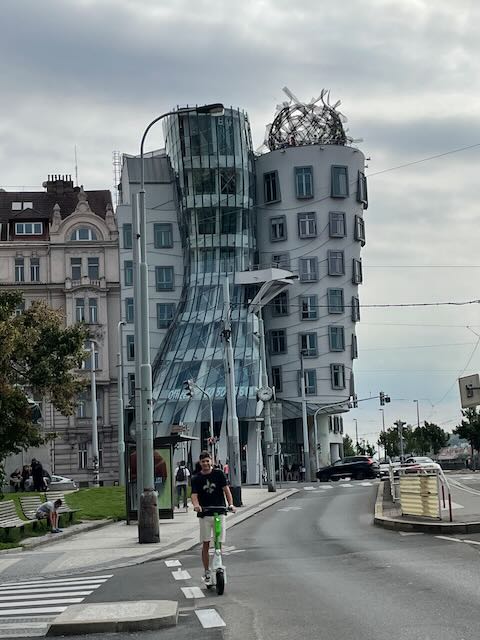

After we’d walked past the Dancing House, we had lunch at an outside cafe and then resumed our very long hike, the end of it largely uphill. We were intrigued by how many of the streets and sidewalks in Prague were cobbled, which does not make walking easier but does create an impressive footpath. We passed some city workers at one point who were replacing cracked or broken cobblestones. A lot of work must go in to keeping all those thoroughfares in working order.
At last we arrived at the Vyšehrad or Upper Castle (not to be confused with the Prague Castle), which is next to a cemetery where several famous Czechs are buried. We enjoyed spectacular views of Prague from the heights where the Vyšehrad is located.
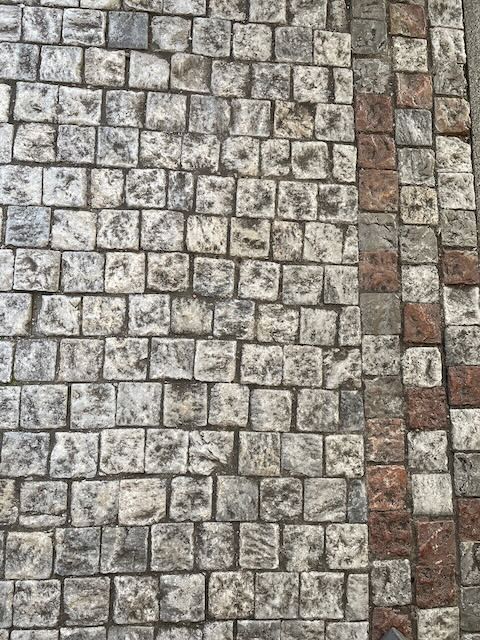





Wenceslas Square
Finally we returned on foot to our hotel, bringing the day’s total steps (according to my watch) to nearly 14,000 – which was quite a bit for us! As we returned to the Old Town we made a detour to take in Wenceslas Square. Wikipedia tells us that this square is “the centre of the business and cultural communities in the New Town of Prague. Many historical events occurred there, and it is a traditional setting for demonstrations, celebrations, and other public gatherings. It is also the place with the busiest pedestrian traffic in the whole country. The square is named after Saint Wenceslas, the patron saint of Bohemia.”
We were very pleased that we were able to find the building on the square where Miro had lived with his family after returning from England. He wrote, “We lived in an apartment complex name Palác Lucerna, on the corner of Wenceslas Square and Vodičkova. The Palác Lucerna was a multi-use building that included apartments, restaurants, offices and shops, and there was an arcade going through it. It was developed by the grandfather of Václav Havel, the playwright and essayist who was the last president of Czechoslovakia (1989 to 1992) and the first president of the Czech Republic (1993 to 2003).”



On the way back to our hotel we were amused to see a souvenir shop displaying team figurines that included our own Toronto Maple Leafs (see the Habs’ uniform above the Leafs’. Note to my friends and relatives in Edmonton: no sign of the Oilers!).


************

Miro Klement, March 7, 1934 – November 13, 2021 (Copies of Miro’s memoir are available on request)
